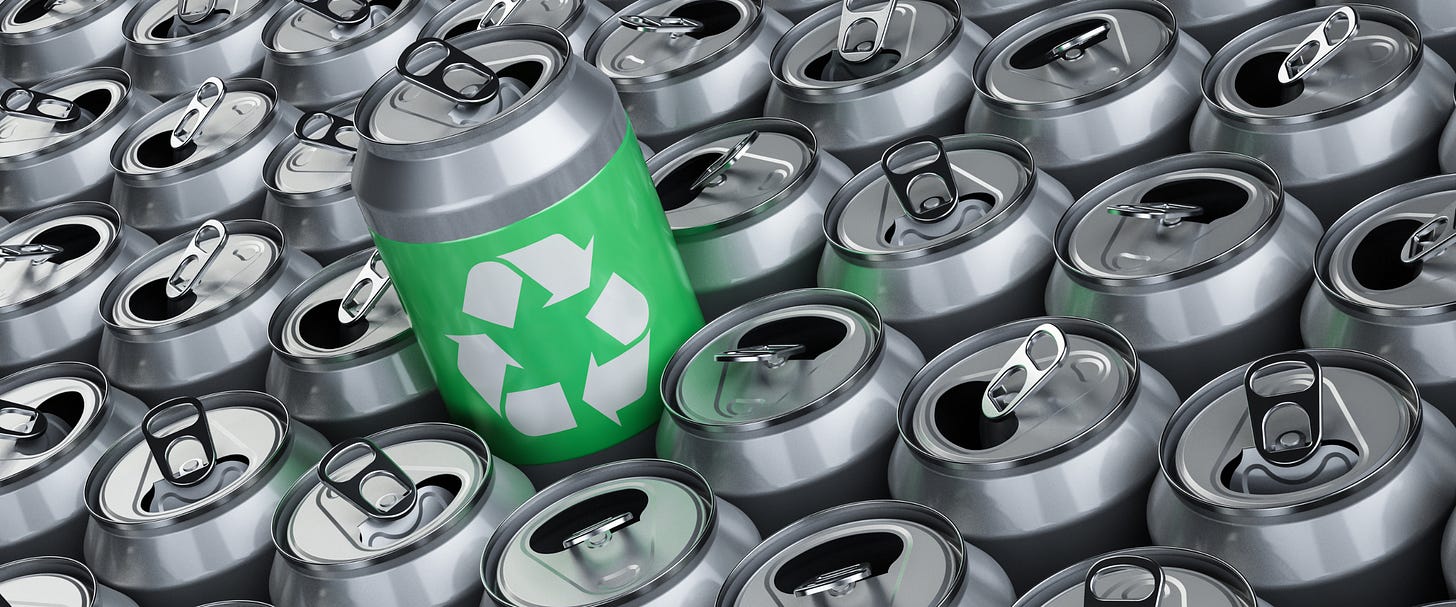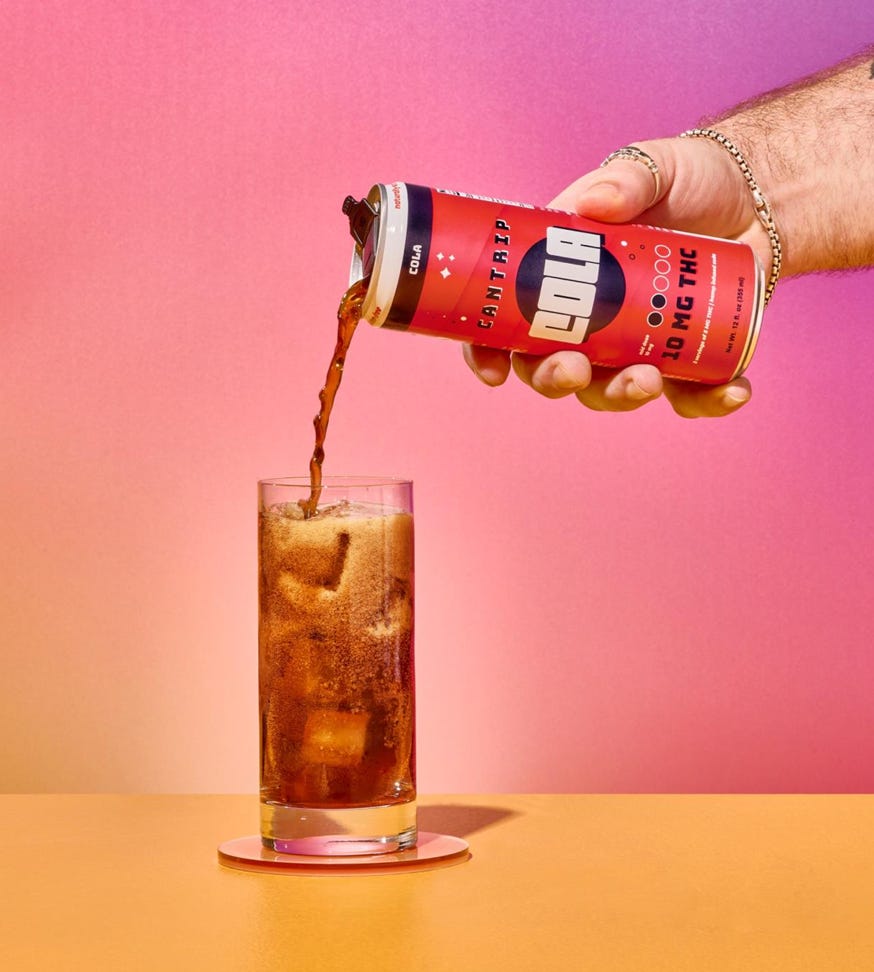The winners and losers of a 25% aluminum tariff hitting the THC drinks industry
A cull is coming as we enter the jungle ahead of schedule
If you didn’t catch it, President Trump told reports on Friday that on Monday he would announce a 25% tariff on all steel imports into the US. Then, almost as an afterthought, he added the words: “Aluminum, too.” It is possible that never have two little words have had the potential for such an enormous impact on the US beverage industry. This will affect industries of all kinds, but have a major impact on the THC drinks industry in particular.
The US is the 10th largest producer of aluminum overall, and the 7th largest aluminum consumer per capita (making it one of the largest overall aluminum consumption economies.) This means that the US imports a very large amount of the aluminum used and consumed in the country, largely from countries like China and Canada. So these tariffs are a pretty big deal for anyone using aluminum in their supply chain. Besides tin foil, the other largest industry that consumes aluminum is the packaging industry - most commonly as beverage cans - the two industries collectively accounting for 15.75% of all aluminum consumption (source: Yahoo Finance.)
If you’re a beverage brand or a beverage consumer, this means only one thing: prices are going to go up. For most beverage categories like beer, RTD’s, and soft drinks, this is going to be borne largely by the consumer. This competitive landscape has already achieved equilibrium and scale, and with the typical number one cost of production being in the cans and lids themselves, you can expect your Olipop, LaCroix, Coke, and Bud Lights to go up in price to compensate for this punitive 25% increase in costs. Sorry, beverage lovers - this one is going to hurt.
But if you’re a hemp-derived THC drink, this cost is likely going to be borne by the brand or manufacturer - because our industry is currently facing the inevitable price compression of a new category. As the industry takes off, prices are starting to go down with new competition entering the marketplace and market conditions increasingly driving towards price shopping by retailers and consumers. As a result, because we haven’t reached equilibrium pricing, brands will continue to have to drive price down and try to achieve scale - something that just got a lot harder as the cost of a can just got a lot higher.
So who are the winners and losers? I’ll lay them out below as I see them:
The Losers
New brand entrants to the category.
Have you been seeing the incredible CAGR in the hemp THC drinks industry and thought about jumping in? Things just got a lot harder. As prices go up for aluminum, so does the cost of a Minimum Order Quantity (MOQ) of cans and lids. This makes those first runs just a bit further out of reach for would-be entrepreneurs.Small brands in the space.
If you’re a brand doing less than 25,000 cases annually, your margins are probably very tight. And without access to traditional debt financing options, all of that profit is feeding right back into inventory. Unfortunately, last month’s sales will cover less of next months inventory and overhead than it did before, and so you’re navigating rockier waters than ever.The operationally inefficient
This goes without saying and is parallel to point #4, but if your gross margin is already under less than 40%, your net profit is probably negative, and you’re looking at some tough times and hard choices. You may need to consider sourcing some less expensive ingredients or dropping fewer discounts - in any case, work on that L section of your P/L because increasing price may not work at this stage.
New brands attempting rapid price compression.
I have somewhat less empathy for this group than the new and small. We’ve seen a few brands attempt to drive down price in order to capture quick shelf space, undercutting average price points on certain products by half in attempt to steal market-share and box others out. I’ve never been impressed by this strategy and I’ve seen it fail time and time again, but now those loss leaders will be really taking it on the chin as their costs went up. Time to either bring prices back to normal parameters or deepen those losses. You know who you are, buddy.The undercapitalized and self-funded brands
Many brands in this space are self-funded and lack access to capital, either equity or debt. Traditional debt is still difficult if not impossible to access, and the pool of investors interested in this space is minimal at best, with many fearing the unstable state of regulatory affairs despite the impressive TAM and CAGR. Investing in hemp beverages certainly isn’t for the weak and with limited capital availability, a lot of brands just won’t be able to stay ahead of their cash flow needs.
The Winners
Those already winning.
The first and most obvious winner is the brands that are already ahead. This whole industry is still “sub-scale” in that not a single brand has achieved the kind of volume that can get their prices down to where light beer and malt seltzers like Bud and White Claw already are, but those that are on the larger size can afford to increase their can buys and hit better savings, off-setting the cost of these tariffs. The rich get richer, as they say, and this will be no exception.The operationally efficient and the vertically integrated
The corollary to #3 in the losers section above, those who are already are profitable are going to have a competitive edge as cash flows and capital allocations get tighter and tighter. Brands that are vertically integrated and don’t have to spend on co-packing costs are also going to be advantaged, so long as those monthly Cap-Ex payments don’t get the best of them - but this will give them an edge. I’m proud to say Cantrip increased its net profits by around 700% 2024 over 2023, and so I’d put us in this category despite us not owning the means of our manufacturing.
The very well capitalized
Brands owned by juggernauts like GTI (Seniorita via $AGFY), Curaleaf (Select Brands), Tilray, and other larger name brands that have access to bigger piles of cash relative to the size of their beverage businesses have a clear advantage as capital gets tighter. Curaleaf notably owns their own hemp facility and has their own brand, and so this is going to help them out. The flip side of these publicly exposed companies is that stock prices can affect how much they are willing to allocate to this, but I expect them to do very well.
More losers than winners
I sit on the board of the Hemp Beverage Alliance which has something like 250 members, most of which are small beverage brands. Unfortunately I expect many to be impacted by these tariffs, some in irreparable ways. These tariffs, so far as I can tell, have no expected positive outcome. We cannot simply make more aluminum here unless we can somehow magic more bauxite ore into the ground, which is the ore most often containing aluminum. We will continue to have to import aluminum from other countries, and that will mean we all pay more, and consumers will pay the most.
There is still hope that the President can come up with some reason that he’s won this battle and decide the other way before this takes effect, like happened just last week relative to the tariffs on Canada and Mexico. But I’m not in the business of getting into that man’s head.
So buckle up, Weed Drinks World - a culling is coming, and like the President seems to want, only the strong will survive.
-Adam
@cantripguy on X





